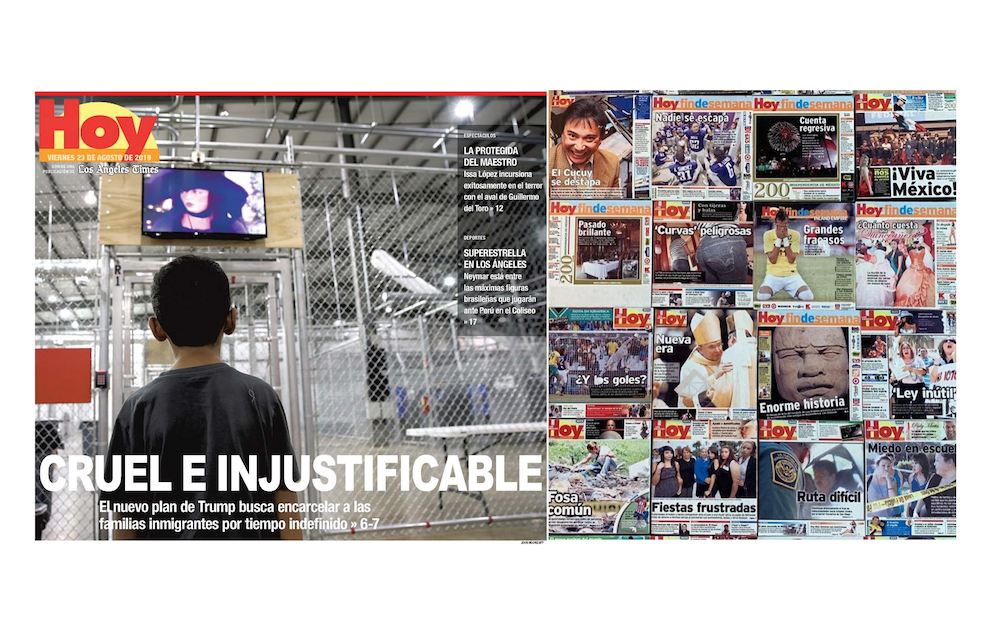The Los Angeles Times has decided to “retire” the Hoy Los Angeles brand and ceased publication of the Spanish-Language weekly.
The last print edition of Hoy Los Angeles was Friday, August 23.
The weekly’s parent company will now focus on its Spanish-language content platform LAT en Español, introduced in March 2018. At the time, creating a second Spanish-language news content website seemed like a test run to eventually eliminate Hoy. That’s exactly what happened.
As a result, Hoy’s publisher and GM Roaldo Morán and members of the sales team were laid off. The company did not address the number of layoffs, but a source says four people from Hoy’s sales division were affected by the change.
Alejandro Maciel, who has led the weekly since 2013, is now editor of LA Times en Español, with the Spanish-language editorial team remaining within the larger news operation.
For the time being, the Hoy Los Angeles website will continue to be live, but will eventually redirect to the LA Times en Español online platform.
The Tribune company launched Hoy Los Angeles in 2004 as a daily, but would later downsize it to a free weekly print edition, published on Fridays and available for pickup on racks. Hoy Fin de Semana, a second print insert-driven weekend edition of over 800,000 copies was delivered to Hispanic homes.
According to a source, the LAT will continue to print an editorial-free LAT en Español insert for home delivery to the Hispanic homes previously serviced by Hoy Fin de Semana.
In announcing the end of Hoy to staff in a joint internal memo, COO Chris Argentieri and LAT Executive Editor Norm Pearlstine attributed the decision to economic factors, declining newspaper readership and increase of online consumption.
“While, in some ways, this is the end of an era, it’s also the beginning of an exciting time,” they wrote. “We are now better prepared to focus on expanding our coverage of, and creating new products for, Latino communities, whether in Spanish, English or both. This also provides us with the opportunity to service and connect to Latino audiences in more dynamic ways, through digital subscription strategies currently in development, specific marketing initiatives and greater integration into our overall site and brand.”
